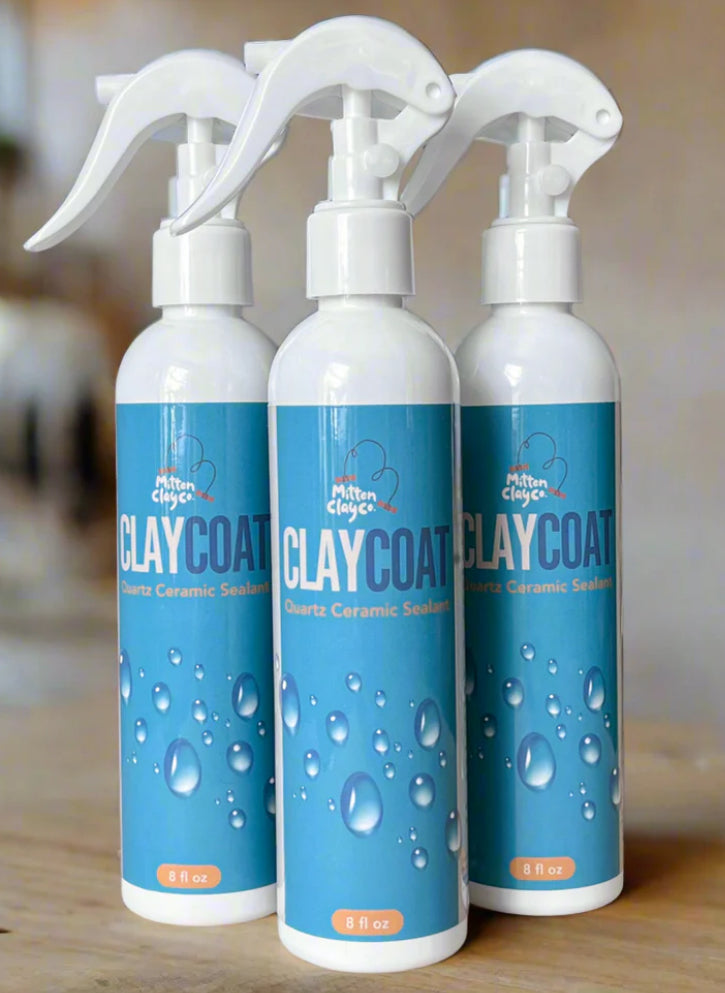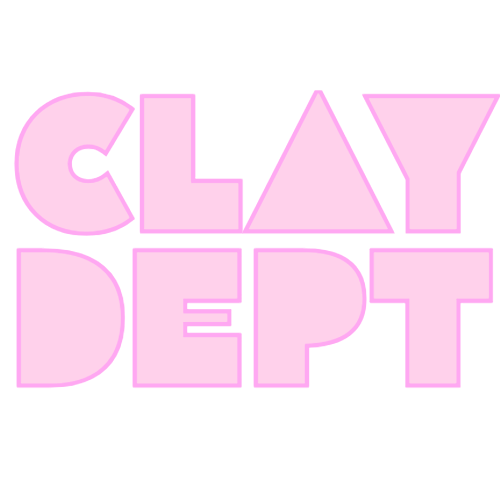Mitten Clay Co.
Clay Coat
Clay Coat
Couldn't load pickup availability
How does Clay Coat Work?
The active ingredient in Clay Coat is Silicon Dioxide (tiny quartz nanoparticles / "liquid quartz"). These nanoparticles settle and bond within the pores of clay surfaces, forming a permanent and impermeable layer of protection for your ceramic wares.
What can Clay Coat be used for?
Clay Coat can seal any fired but porous clay surface as long as it is stable and intact. This includes bisqueware, fully-fired unglazed wares, fired underglaze, and some alternatively fired pots (wood-fired, soda-fired, etc). It is not for use over non-porous surfaces such as glazed areas (though it can seal the cracks within a crazed glaze surface). Clay coat is stable from -95°F to 840°F which makes it excellent for outdoor items exposed to extreme temperatures.
How do I apply Clay Coat?
Begin with bisqueware or fully-fired ware. Ensure that the surface is completely free from dust, grease, and any other contaminants. If the surface has oils or grease on it, consider refiring to remove. If the surface was sanded, wash thoroughly before application. Surface must be fully intact (not chipping or flaking). Ensure that the piece is fully dried before sealant application. This can take multiple days, sometimes longer if the piece was saturated. If any water is still in the walls of the clay, it will not be able to evaporate after sealing.
Shake the bottle before use. Apply gloves and cover arms in case of spray or splashing.
If sealing bare clay/underglaze: Spray, dip, or brush one even layer onto the clay surface until it no longer readily absorbs the sealant. Do not allow Clay Coat to pool in any areas or you may experience yellow discoloration from over-application. If sealant gets on a glazed area, wipe off with a paper towel. Apply only one coat.
If sealing leaky, crazed pots: Pour Clay Coat onto the inside of the leaky vessel. Let it sit for 10 minutes, then pour out (save for future use). Wipe surface dry with paper towel.
Place on a non-absorbent surface. Once dry to the touch, flip over if needed and wipe any excess drips from the bottom surface. Allow 24 hours before handling.
Store Clay Coat in a cool, dark area such as a cupboard. Use within one year.
Does Clay Coat require reapplication?
Once Clay Coat has cured on a surface, it permanently fuses with it. But as with any ceramics, the longevity and durability of the surface is going to depend widely on how you treat it. If you use heavy detergents or abrasives on it then it could wear away the surface (this would be the case with glazed surfaces too, like cutlery leaving marks on plates). Products treated with Clay Coat are hydrophobic and oleophobic, which makes them resist water, grease, acids, alkali and alcohol. This means they should never require harsh detergents or abrasives in the first place. As long as you treat the surface with care, Clay Coat will not require reapplication. If the surface of your ceramic item has chipped or gotten a deep scratch, you can reapply a spot application in the affected areas.
When you first treat your pottery with Clay Coat, liquids will roll right off the surface. After a couple uses you’ll notice that liquids don’t bead up as easily. This should be expected and it does not compromise the effectiveness of the sealed surface.
Is Clay Coat Food Safe?
Although Clay Coat is all natural and non-toxic, it can not be marketed as food safe because it has not yet been FDA approved. For now it is only recommended to be used on surfaces that will not come in direct contact with food (the outside surface of a mug, for example).
How should I care for pieces treated with ClayCoat?
If the surface gets dirty, wash soon after use. Some substances could cause stains on the surface of your pottery treated with Clay Coat, but washing them promptly will help to avoid this. Do not use harsh detergents or abrasives on the surface. Some mild dish soap and water or a trip through the dishwasher is all that is needed to clean the surface.
What if I want to remove Clay Coat?
Should you wish to remove Clay Coat, simply refire it above 845°F.
Troubleshooting:
Clay surface didn’t seal: The surface seal will only be as successful as the application. If your surface didn’t seal, it likely 1) wasn’t free of dust or grease, 2) wasn’t fully dry, 3) wasn’t stable enough for a proper seal, 4) wasn’t covered entirely with Clay Coat, 5) Clay Coat wasn't shaken before use, 6) Clay Coat wasn’t applied evenly, or 7) Clay Coat is older than 1 year or not stored properly.
Yellow discoloration on surface of ware: This can happen if Clay Coat was applied too thick. Remember to only apply until it's no longer readily absorbed, and do not let it pool on the surface while drying. Do not apply more than one coat.
Share




